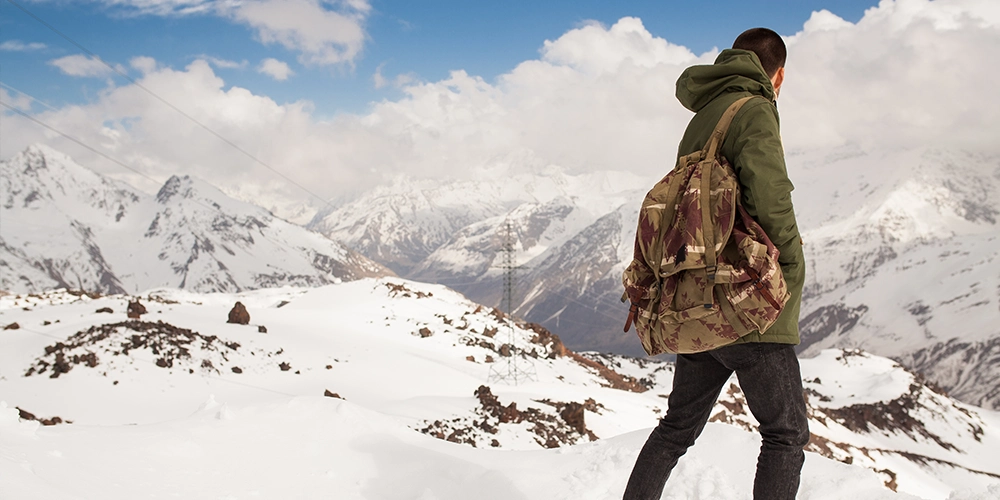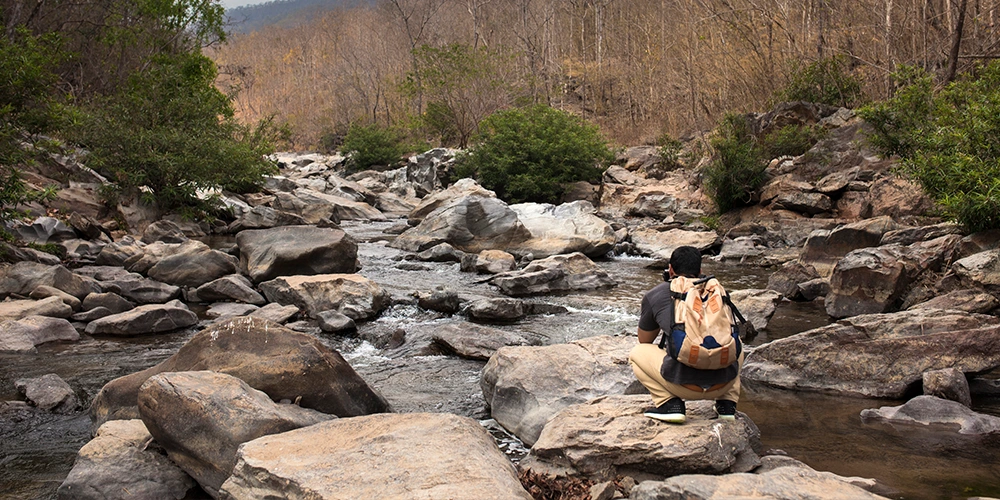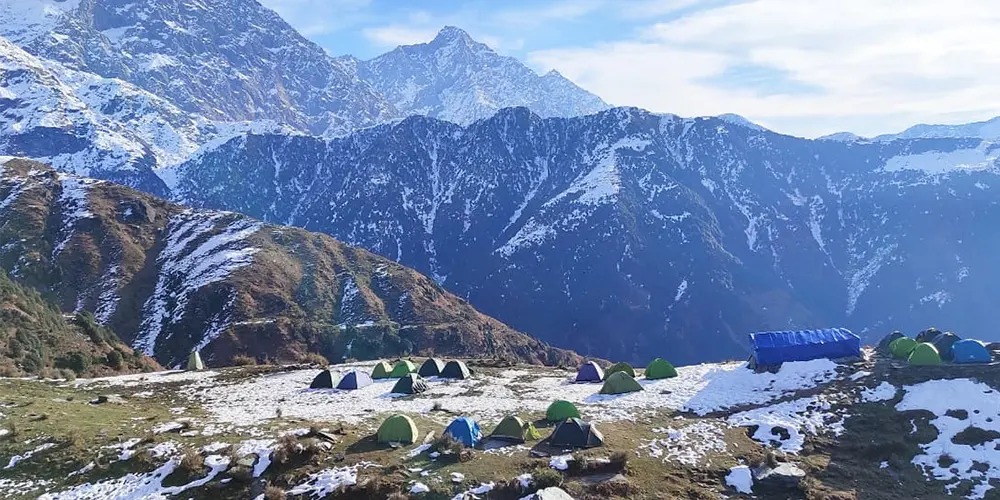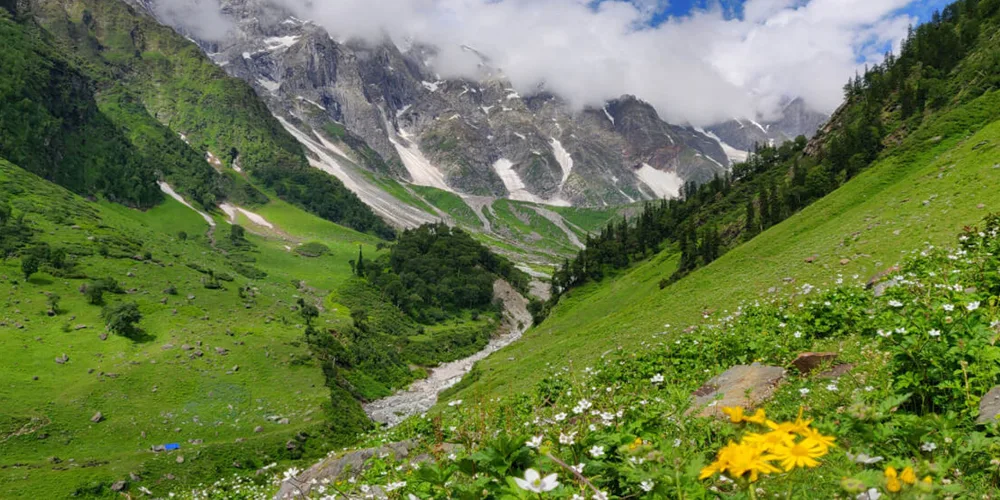
It’s an open secret now that famous treks in Himachal Pradesh are ideal destinations for hiking enthusiasts. Known for its dynamic landscape, adventurous mountain ranges, and varied thrilling sports. The places to visit in Himachal hold options for everyone be it novice or experienced it offers mild slopes to difficult trek paths.
These trek routes are ideal for hikers looking for the best chance to discover green valleys, picturesque forests, and high peaks. All while interacting with the varied cultural customs of the neighboring villages.
Whether you are an experienced hiker or a novice wanting to commune with nature, Himachal Pradesh offers various paths appropriate for every skill level. This beautiful area is known as a hiker’s dream, with breathtaking views and refreshing air that attract nature enthusiasts to unforgettable adventures.
Essential Tips for Planning Your Next Adventure
Before hopping into any adventure in Himachal Pradesh, it is important to also be aware of key considerations of the trek. So that trekkers take back memorable experiences surrounded by the breathtaking Himalayan scenery and not any difficult memories. Let’s see the key considerations of the trek:
Best Season to Trek in Himachal Pradesh
Himachal Pradesh is a gem of numerous trekking spots that provide excitement and adventure. Some of the finest locations vary from lush green valleys to snow-capped mountains. It is important to consider the season and time before beginning the trek:
Spring
From March to June marking the spring season is ideal for trekkers seeking moderate weather with blooming flora. Some of the famous treks in the spring season are Triund, Hampta Pass, and Kheerganga.
Autumn
Post-monsoon treks, like Beas Kund and Bhrigu Lake, offer clear skies and pleasant temperatures. The scenery is a captivating mix of greenery and early snow.
Monsoon and Winter
While certain treks may be unavailable because of landslides or snow, the monsoon season treks provide rich scenery for hikers, whereas winter treks such as the Snowline Trek are better for experienced trekkers.
Permits and Regulations for Trekking
Along with fun and adventure, it is equally important to abide by all the regulations and permits to ensure safe trekking experience:
Permits
Some specific Himachal tourist places, particularly in regions close to animal reserves (such as the Great Himalayan National Park), need permission from the Forest Department. Certain high-altitude hikes may also require authorization from either the local authorities or the Indian Mountaineering Foundation (IMF).
Foreign Nationals
Non-Indian individuals might require extra permits for hikes close to international borders, like in the Spiti Valley.
Guides and Local Support
Employing an authorized guide not only increases safety but also guarantees adherence to sustainable trekking practices.
Famous Treks in Himachal Pradesh: An Overview of Beautiful Exploration
Triund Trek
Triund Trek is regarded as must visit in Himachal Pradesh among the famous trekking places. It offers a stunning view of the famous Dhauladhar ranges and the Kangra Valley. The duration to cover the trek lasts around 4 to 6 hours with just 9 km of distance, which makes it a short trek to refresh. With the ultimate combination of adventure and peace, it is ideal for all types of trekkers.
Hampta Pass Trek
The Hampta Pass Trek is an essential adventure for those seeking thrills, famous for its dynamic scenery that shifts from vibrant green valleys to barren, desert-like landscapes. Over the course of five memorable days, this hike guides you through charming Himalayan villages, flowing waterfalls, and lush alpine meadows, offering stunning vistas of the magnificent Pir Panjal range and the enchanting allure of the Spiti Valley.
Beas Kund Trek
Beas Kund Trek serves as the perfect weekend escape, taking you to the origin of the Beas River. This easy trek is an optimal hike for beginners providing a stunning view of the Pir Panjal mountain range. The tranquil Beas Kund glacial lake at the trail’s conclusion is a serene escape.
Kheerganga Trek
Kheerganga is known for its mythological importance, lasting 1-2 days and passing through thick forests and waterfalls. It is an ideal getaway for nature enthusiasts and those in search of spiritual peace in the Parvati Valley.
Bhrigu Lake Trek
This trek is not just any other trek its a heaven for people looking for peace in natural surroundings. Named after a famous Hindu sage Rishi Bhrigu, the trek is renowned for its immaculate alpine lake and dense snow-covered mountain, Bhrigu Lake is a dream destination in Himachal Pradesh for trek lovers. Lasting for 3 days the trek starts from Manali, presenting a memory that lasts a lifetime.
Indrahar Pass Trek
Looking for that refreshing view with rugged terrain, steep snowy valleys, and dense woodlands? then Indrahar Pass Trek can be your next trek destination. lasting for 4 to 5 days the trek is an ideal exploration for experienced trekkers. With thrilling terrain and imprinting charm of the valley offer an unforgettable experience for trekkers.
Spiti Valley
Spiti, an awe-inspiring desert valley at high elevation located in the Himalayas, is a rich source of natural and cultural marvels. Appropriately called “The Middle Land,” Spiti acts as a magical link between India and Tibet, merging the allure of both areas marking one of the best places to visit. Famous for its striking, surreal scenery and tranquil monasteries, this isolated valley continues to be one of the most hidden and unspoiled locations on Earth, providing a refuge for both explorers and tranquility seekers.
Trek in Great Himalayan National Park
This journey leads hikers through the thick and varied ecosystem of Himachal Pradesh. The trek in Great Himalayan National Park presents an intermediate difficulty level. Guiding them through the lush forest and encountering a diverse array of plants and animals fulfills the dreams of nature enthusiasts.
Tips and Safety Measures for Best Trekking Experience
Fitness and Health Considerations
Before starting a hike, it is crucial to concentrate on your physical condition. Engaging in consistent cardio, strength training, and flexibility workouts can help get your body ready for extended hikes. Ensuring you drink enough water and eat a variety of foods will help boost your stamina as well. Make sure to see your doctor if you have any existing health issues to confirm you’re in good physical shape for the upcoming adventure.
Acclimatization Tips
Getting used to the high altitude is vital for hiking in higher elevations. Gradually increase in elevation to give your body time to acclimate to the oxygen level changes. Extend stays at important locations to prevent altitude sickness. Maintaining hydration is crucial – ensure you consume plenty of water and avoid alcohol or caffeine, since they could exacerbate symptoms.
Safety Precautions
Being ready is essential for maintaining safety in the mountains. Before you start to pack always check the latest weather forecast and pack accordingly also take along the essential first aid kit and appropriate trekking footwear. Always follow the marked trail, avoid trekking alone, and always keep someone updated about your whereabouts.
Ready for Next Trek?
There is a treasure of places for trekking in Himachal Pradesh something for every type of trekker. Here every trekkers enthusiast can have their piece of fun, peace, and adventure. With mesmerizing natural beauty and adrenaline-rushing adventure, they can have a memory for life. With a wide array of terrain type, it can accommodate trekkers with any to no experience at all. When planning your trek, think about adopting responsible travel practices to protect the environment. Begin your journey now by making environmentally friendly decisions that preserve these stunning paths for the next generation.




























